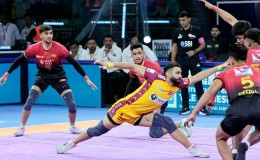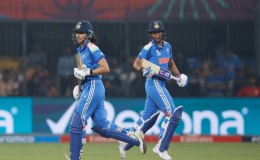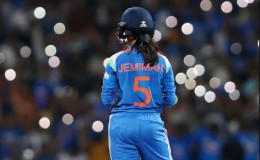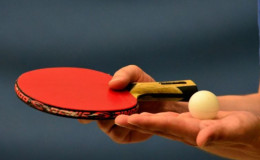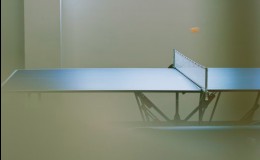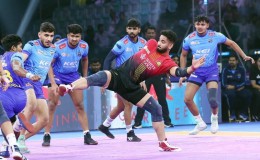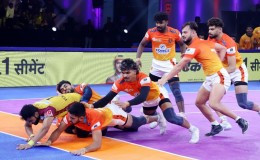Srinagar: Kashmir is staking its claim as one of the premier destinations for adventure tourism in the country, and globally. The J&K Bank Mughal Rally, an annual motorsport race, has redefined Kashmir in terms of adventure sports.
The Mughal Rally ran its fourth edition this year, over June 28-29. About 120 rallyists from various parts of the country competed in two categories: Rally Xtreme and Rally Enduro. While Rally Xtreme is an all-out speed rush, Rally Enduro follows the Time-Speed-Distance (TSD) format.
From 2010 to 2013, about 1,000 motorsport buffs have rolled into Kashmir to compete in The Mughal Rally. Such is Kashmir’s pull for motorsport that the hills are coming alive with the roar of engines. Speed champions of the country are experiencing the thrill of competing on the delightfully challenging, ever-changing tracks of the Pir Panjal and other mountain ranges in this region.
The region’s magnetic appeal for motorsport is spreading. The third season of the JK Racing Series, re-christened Formula BMW, may hold its third round on the smooth, wide road skirting the fantastic Dal Lake. Formula BMW is slated in Srinagar in the first week of September.
Worldwide, sport is considered a significant boost for tourism. These popular motorsport events are spreading the message of peace in Kashmir both nationally and internationally. At a time when cricket, football or other popular sports were nowhere on Kashmir’s soil, motorsport came to Kashmir, and helped boost tourism. In 2005, when terrorism was still high in the valley, the Raid De Himalaya rolled into Kashmir. The Raid, an iconic motorsport event, is the mecca of rallying in Asia. It is organized by Himalayan Motorsport, the premier Shimla-based motorsport club. And in 2010 came The Mughal Rally.
The Mughal Rally is a fast, technical event on a track that was once an elephant trail – at the time of the Mughals. This is the historic track used by Emperors Akbar, Jahangir and Shah Jahan to traverse Kashmir to go to Lahore.
Construction of the Mughal Road was conceived decades ago by the then J&K Chief Minister Sheikh Abdullah - the grandfather of the present Chief Minister, Omar Abdullah. Omar’s father Farooq Abdullah was equally keen on it, and pushed it all along during his tenure as CM. In May 2007, the Supreme Court finally gave clearance for the construction of The Mughal Road.
Work began in full earnest to widen the old elephant trail into a road. Two years later, the road was still a quagmire of mud and rocks, and could be traversed only by powerful 4X4 vehicles. Chief Minister Omar Abdullah, an auto buff, knew the track wasn't ready for normal traffic yet. But with its breathtaking landscapes, it was ideal route for a rally.
In 2009, the Raid De Himalaya again ended in Srinagar. During the prize-distribution ceremony, Omar Abdullah asked Himalayan Motorsport to open The Mughal Road with a rally. Himalayan Motorsport agreed, and The Mughal Rally was born.
In June 2010, the first Mughal Rally ran on the Mughal Road. At that time, the average top speed of the competitors was 55 kilometers per hour. The first year of the Mughal Rally was historic and literally path-breaking! Unbelievable ascents on huge slabs of rock and deep mud. Endless hairpins being cut till one lost the count. Only experienced rallyists driving 4x4 vehicles could imagine crossing on the 'first cut' of the road to Pir Ki Gali. It was an event to rival the East African Safari Rally, though on a much smaller ‘run distance’.
In its first year, The Mughal Rally was threatened by an ongoing curfew. Being an event much in public glare, it needed a security net to ensure a safe run through disturbed areas. Nature heightened the excitement. There was pouring rain on the first day over Sinthan Pass, and landslides aplenty on the second day over Pir ki Gali. The water crossings were running so high that Gaurav Chiripal of Delhi, competing in a Suzuki Grand Vitara, actually managed to drown his vehicle at Chattapani !
The first Mughal Rally was iconic in its difficulty and its attempt to create history - both of which it achieved admirably!
Three years later, it's a different story. The Mughal Road is now a smooth, double laned highway which was formally opened by Prime Minister Dr Manmohan Singh on June 25, 2013. The top speed of the rallyists on this track now goes up to 170 kilometers per hour.
The wide, smooth tarmac has changed the nature of The Mughal Rally. In its 4th edition, The Mughal Rally has been the first motorsport event in the country to be a hill climb battle. Ghulam Ahmad Mir, J&K Tourism Minister, said that this year, the event was patterned on The Pikes Peak Hill Climb, the hugely-popular automobile and motorcycle hill climb in the USA.
“We realized that Pir Ki Gali on Mughal Road and Sinthan Pass offer the same challenge to motorsport enthusiasts. This year, we had entries from almost all parts of the country for the hill climb, and it has the potential of becoming an international challenge,” said Mir.
Pir Ki Gali and Sinthan Pass are two of the highest mountain passes in the country. Pir Ki Gali is the highest point on The Mughal Road, at an altitude of 11,500 feet (4,100 meters) approximately. Sinthan Pass is at an altitude of 12,450 feet (3,748 meters) approximately.
THE MUGHAL RALLY: A BEACON OF NORMALCY FOR KASHMIRIS
The Mughal Rally is a child of time and circumstance. A 30-year-old project came to fruition in 2010, at a time when militancy celebrated 20 years of existence in Kashmir. With militancy waning visibly, The Mughal Rally was proposed and executed despite curfew, bandhs and unrest surrounding it. It was a great boost for image. At last, Kashmir had something to shout about to prove a return to normalcy.
The 2nd and the 3rd Mughal Rallies reinforced Kashmir as a safe tourist destination point to a degree that Germany even withdrew its travel advisory against the troubled valley.
Today, the valley has a record number of tourists flocking to its lake shores. Add to it The Mughal Rally, which normally uses 1000 room nights every year. The Raid De Himalaya – India’s biggest rally - uses 2,200 room nights!
The Mughal Rally is much more than a motorsport event. It is a beacon of normalcy for Kashmiris. The local tour operators use it to full impact to reassure prospective tourists. "Would The Mughal Rally run here if Kashmir was not safe?" they confidently ask the tourists.
Coming to 2013, the rally has evolved along the Mughal Road. The road, now a fairly stable and smooth ribbon of tarmac, has changed the game.
Nevertheless, nature prevails. The 4th Mughal Rally was made even more challenging by adverse weather conditions both days. Day One was marked by landslide and rockfall on the competitive stretch near Pir Ki Gali. On Day Two, rallyists had to put up with terrible rain and storm for almost four hours in the competitive stretches. Dense fog on the hill climb to Sinthan Pass upped the excitement. Even during the height of summer, the hill climb to Sinthan Pass is lined with walls of snow. It is open from April to September.
Vijay Parmar, the president of Himalayan Motorsport, says that come Mughal Rally 2014, highly suspended 4x4's will give way to low, wide and fast cars. "It’s not about wading through streams or hurdling fallen trees anymore. It’s about keeping to the racing line through the corners and sheer horsepower. Evolution 3 is around the corner," said Parmar.
The 5th Mughal Rally will be a full-fledged hill climb event. Cars will rule the roost and turbocharged engines will win. With all the technology available today, this will be the first event where new tech will meet the road. The SUVs may just be edged out.
The change is already underway. Amittrajit Ghosh, winner of Rally 2012 and 2013, has shown that a well driven Lancer can win hands down. The beaten are not likely to ignore the writing on the wall.

